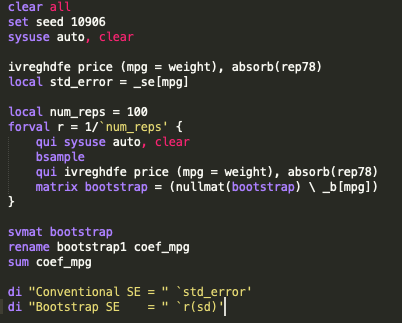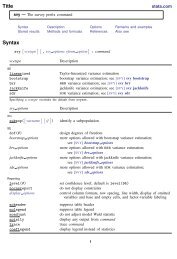

The procedure I use is as follows: 1) build model using the entire dataset, obtain predicted values, and calculate AUC (AUCap, apparent) 2) generate 100-500 bootstrap. The example below uses the default index vector and assumes we wish to use all of our observations. I am using the bootstrap approach for internal validation of a multivariate model built with either standard logistic regression OR elastic net. The second argument can be an index vector of the observations in your dataset to use or a frequency or weight vector that informs the sampling probabilities. The first argument passed to the function should be your dataset. Before calling boot, you need to define a function that will return the statistic(s) that you would like to bootstrap. The boot command executes the resampling of your dataset and calculation of your statistic(s) of interest on these samples. Hsb2 <- read.table("", sep=",", header=T) Using the boot command

We will be using the hsb2 dataset for all of the examples on this page.
#BOOTSTRAP STATA DOWNLOAD#
You must first download the package and load it in your workspace. Before using commands in the boot package, We will demonstrate a few of these techniques in this page and you can read more details at its CRAN package page. From these samples, you can generate estimates of bias, bootstrap confidence intervals, or plots of your bootstrap replicates.

PS: Stata has a quite elaborated help file on bootstrapping, you should also check that.The R package boot allows a user to easily generate bootstrap samples of virtually any statistic that they can calculate in R.

I would use cluster robust standard error in each stage of the two-stage bootstrap in this case. Update: Sorry, I forgot to comment on the case of panel data. I have to say, I think the topic is often confusing, in particular if you have several first-stages, I have also a question open here, yet without answers.
#BOOTSTRAP STATA FREE#
Here is also a small overview which is free and discusses some of the topics you can also find in the Cameron and Trivedi book.
#BOOTSTRAP STATA CODE#
You can find code examples (in Stata) for different examples Said so, it is much simpler to do the two-stage bootstrap. You can also bootstrap only the second stage but then you have to make further assumptions about the distribution of your predicted variables (parametric bootstrap). : The bootstrap is indeed applied to both the first-stage and second-stage equation. Do I need to make some additional adjustments in the case that I use panel data with respect to the case shown above?Ĭameron and Trivedi - Microeconometrics using Stata discuss different bootstrap techniques and the show Stata code files, for example, for Heckman’s two-step estimator. First, I use the within-group differencing to delete unobserved heterogeneity, then I estimate the parameters using the control function approach as if the data is cross-sectional data (see above). Now, let's assume that I have panel data on $y$, $x_1$, and $x_2$.


 0 kommentar(er)
0 kommentar(er)
